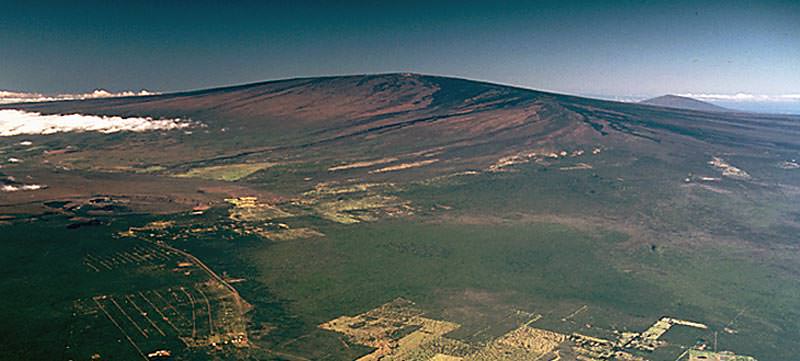[/caption]
The largest volcano on Earth is Mauna Loa, which is one of the 5 volcanoes that make up the Big Island of Hawaii. When we talk about biggest volcano here, we’re talking about the volcano that has the biggest volume, and that’s Mauna Loa. It’s made up of an estimated 75,000 cubic kilometers of material.
Mauna Loa is an active shield volcano, and scientists think that it has been erupting for about 700,000 years; it emerged through the surface of the ocean about 400,000 years ago. The active magma for Mauna Loa comes from the Hawaiian hotspot. But the plate carrying the massive volcano is slowly carrying it away from the hotspot, and it will go extinct in the next 500,000 to 1 million years. It last erupted in 1984, and destroyed homes and villages in 1926 and 1950.
The volcano measures 4,169 meters above sea level, but that’s not its true height. Measured from the sea floor, Mauna Loa is really taller than 9,000 meters – that’s taller than Mount Everest. But Mauna Loa isn’t the tallest volcano, that’s actually its neighbor, Mauna Kea, which is about 40 meters taller.
The biggest volcano in the Solar System isn’t on Earth, but on Mars. Olympus Mons, on Mars, measures 27 km high, and has about 100 times the volume of Mauna Loa.
We have written many articles about the Earth for Universe Today. Here’s an article about the biggest volcano in the Solar System, and here are some great images of a lightning storm around a volcano.
Want more resources on the Earth? Here’s a link to NASA’s Human Spaceflight page, and here’s NASA’s Visible Earth.
We have also recorded an episode of Astronomy Cast about Earth, as part of our tour through the Solar System – Episode 51: Earth.

